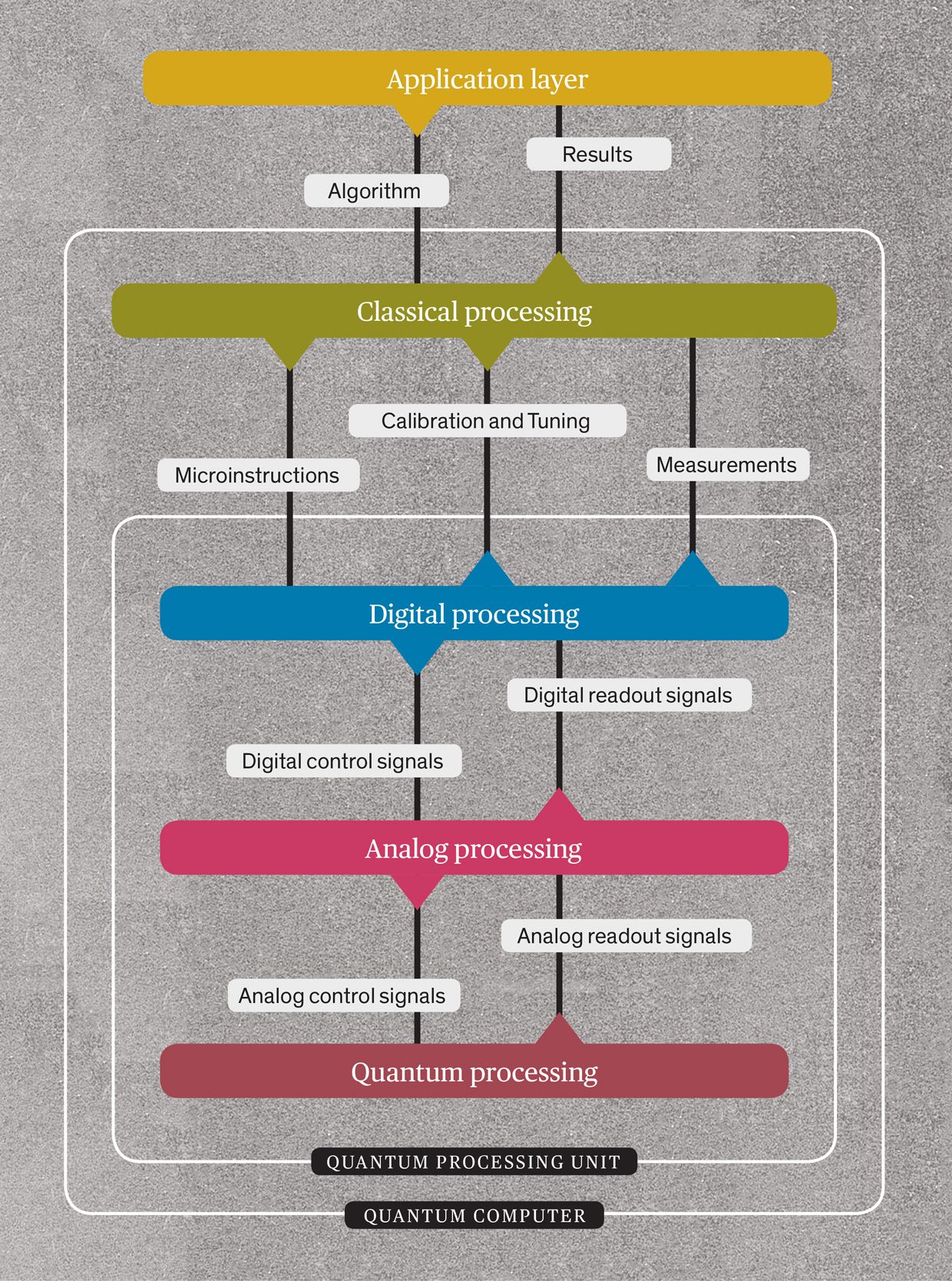IEEE Spectrum March 24, 2020
Researchers in the Netherlands have found that the functions needed for a quantum computer can naturally be divided into five such groups, conceptually represented by five layers of control. They are: Application layer, a key part of the overall system; Directly below the application layer is the classical-processing layer, which has three basic functions; Underneath the classical layer are the digital-, analog-, and quantum-processing layers, which together make up a quantum processing unit (QPU). To prepare for these developments, chip designers, chip-fabrication-process engineers, cryogenic-control specialists, experts in mass data handling, quantum-algorithm developers, and others will need to work together closely. Such a complex collaboration would benefit from an international quantum-engineering road map. According to the author by combining the efforts of academic institutions, research institutes, and commercial companies, we can and will succeed in building practical quantum computers, unleashing immense computing power for the future…read more.

Layer Cake: The components of a practical quantum computer can be divided into five sections, each carrying out different kinds of processing. Illustration: Chad Hagen